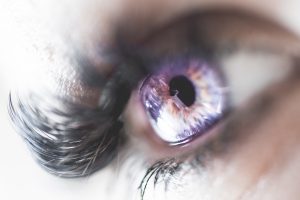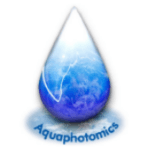Studies on water-material interaction hold great promise in understanding some of the very elusive properties like wettability or biocompatibility.
The structure of water have been recognized as fundamental for the biocompatibility of polymers, as a number of recent studies point out (Tanaka, Hayashi, and Morita 2013, Morita, Tanaka, and Ozaki 2007, Morita et al. 2010). These works are excellent examples of other windows in EM spectra which reveal structure – function relationship of water.

Recent aquaphotomics material studies include exploration of water state in hydrogel materials of soft contact lenses (Munćan, Mileusnić, Šakota Rosić, et al. 2016, Šakota Rosić et al. 2016) which revealed the state of the polymer networks, protein deposits on the surfaces of worn contact lenses, and for the first time while the lenses are hydrated in conditions most similar to physiological. Furthermore, these studies provide a common platform for exploration of water and hydrophilic materials at the same time in a completely non-destructive manner.
Aquaphotomics ventured even in the exploration of nanomaterials, such as, fullerene based nanomaterials revealing them to act in very low concentrations as water structuring elements (Matija et al. 2012, Matija et al. 2013). This finding may explain some of the peculiar findings about their excellent antioxidant and radioprotective properties, where it is only hypothesized so far that water plays also a key role (Andrievsky et al. 2009).
Other aquaphotomics works reported successful measurements of concentration of metal ions in water in a range of 0-10.mgL-1 (Tsenkova, Fockenberg, et al. 2007, Putra et al. 2010) and polystyrene particles in aqueous suspensions (1 %–0.0001%) (Tsenkova, Iso, et al. 2007).
Tanaka, M., T. Hayashi, and S. Morita. 2013. “The roles of water molecules at the biointerface of medical polymers.” Polymer journal 45 (7):701-710.
Morita, S., M. Tanaka, and Y. Ozaki. 2007. “Time-resolved in situ ATR-IR observations of the process of sorption of water into a poly (2-methoxyethyl acrylate) film.” Langmuir 23 (7):3750-3761.
Morita, Shigeaki, Masaru Tanaka, Kuniyuki Kitagawa, and Yukihiro Ozaki. 2010. “Hydration structure of poly (2-methoxyethyl acrylate): comparison with a 2-methoxyethyl acetate model monomer.” Journal of Biomaterials Science, Polymer Edition 21 (14):1925-1935.
Munćan, J., I. Mileusnić, J. Šakota Rosić, A. Vasić-Milovanović, and L. Matija. 2016. “Water properties of soft contact lenses: A comparative near-infrared study of two hydrogel materials.” International Journal of Polymer Science 2016.
Šakota Rosić, J., J. Munćan, I. Mileusnić, B. Kosić, and L. Matija. 2016. “Detection of protein deposits using NIR spectroscopy.” Soft Materials 14 (4):264-271.
Matija, L., R. Tsenkova, M. Miyazaki, K. Banba, and J. Muncan. 2012. “Aquagrams: Water spectral pattern as characterization of hydrogenated nanomaterial.” FME Transactions 40 (2):51-56.
Matija, L., R. Tsenkova, J. Munćan, M. Miyazaki, K. Banba, M. Tomić, and B. Jeftić. 2013. “Fullerene based nanomaterials for biomedical applications: engineering, functionalization and characterization.” Advanced Materials Research.
Andrievsky, Grigory V, Vadim I Bruskov, Artem A Tykhomyrov, and Sergey V Gudkov. 2009. “Peculiarities of the antioxidant and radioprotective effects of hydrated C60 fullerene nanostuctures in vitro and in vivo.” Free radical biology and medicine 47 (6):786-793.
Tsenkova, R, C Fockenberg, N Koseva, A Sakudo, and M Parker. 2007. “Aquaphotomics: water absorbance patterns in NIR range used for detection of metal ions reveal the importance of sample preparation.” 13th international conference on near infrared spectroscopy Umea-Vasa, Sweden & Finland.
Putra, A., F. Faridah, E. Inokuma, and R. Santo. 2010. “Robust spectral model for low metal concentration measurement in aqueous solution reveals the importance of water absorbance bands.” Jurnal Sains dan Teknologi Reaksi 8 (1).
Tsenkova, R., E. Iso, M. Parker, C. Fockenberg, and M. Okubo. 2007. “Aquaphotomics: a NIRS investigation into the perturbation of water spectrum in an aqueous suspension of mesoscopic scale polystyrene spheres.” 13th international conference on near infrared spectroscopy, Umea-Vasa, Sweden & Finland.
